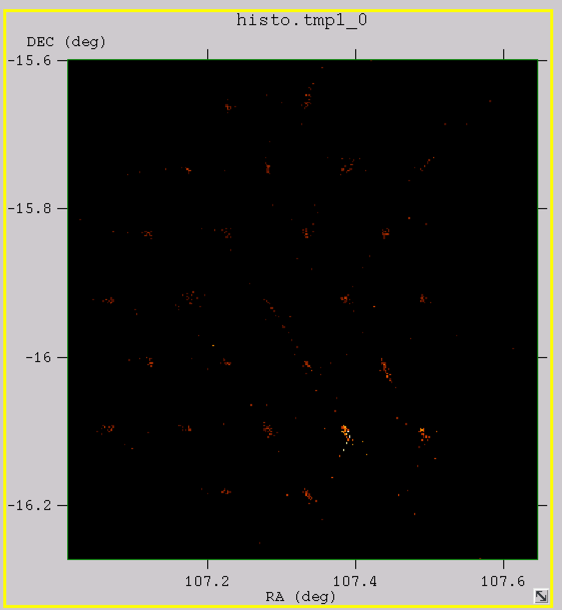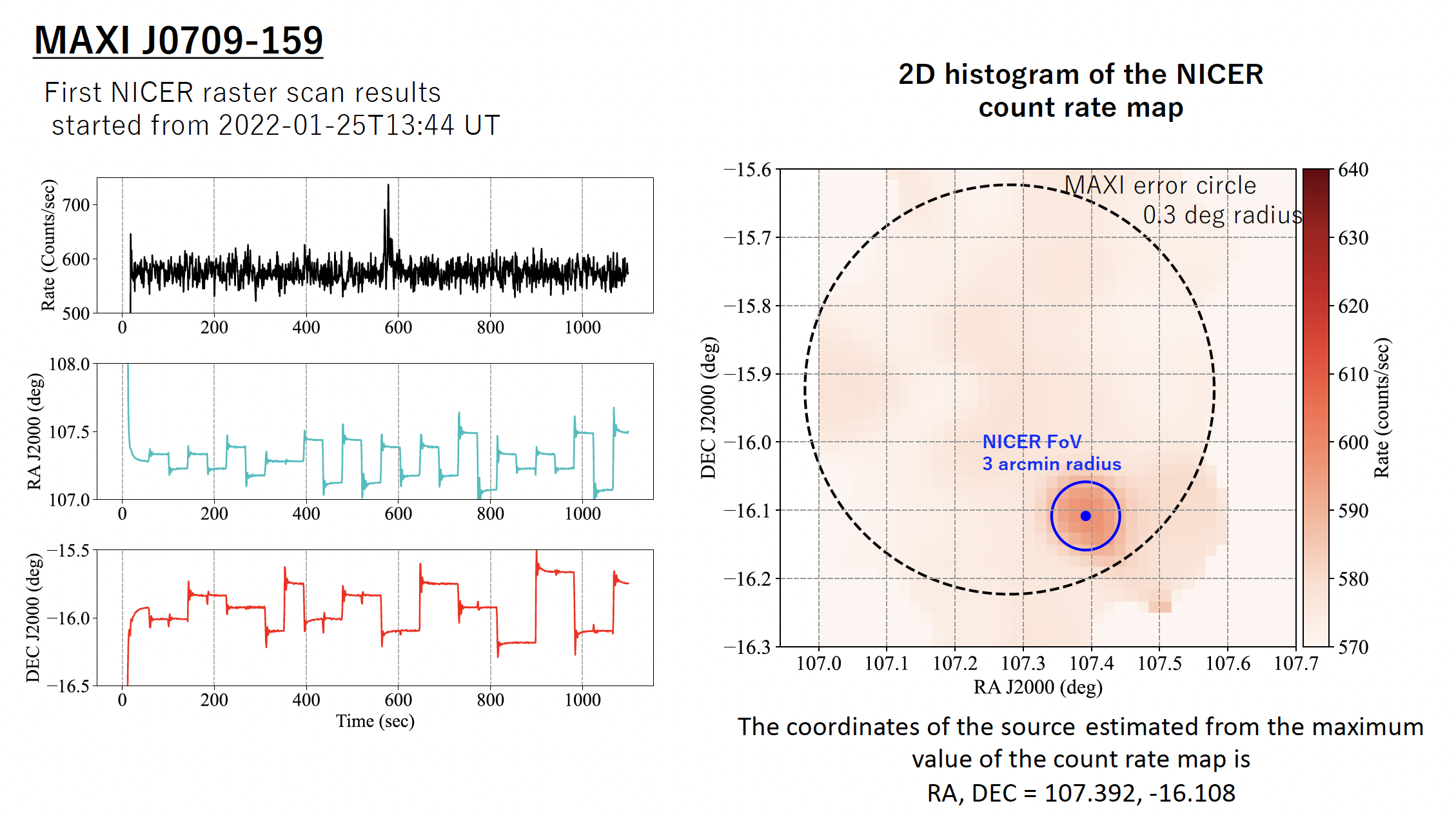NICER / ISS Science Nugget
for January 27, 2022
NICER homes in on a new MAXI source discovery
On January 25, 2022, JAXA's MAXI payload detected a new X-ray transient at approximately 10:42 UT. This detection was communicated by email to the NICER team at 11:17 UT. Because the X-ray source was uncatalogued and did not have a known position, MAXI could only provide sky coordinates with an error circle of about 0.15 degree radius. NICER flight software has recently been upgraded to execute a grid scan (Figure 1) over such error regions. A command was sent by NICER operators on the ground to execute a search for the new source designated MAXI J0709-159; at 13:44 UT, two orbits after the initial MAXI detection, NICER searched for and found the new transient source.
NICER continued observations at the new position derived from the grid scan and found that the source faded over the next few hours. NICER will continue to follow the source, in case it brightens again.
It is likely that the source is a type of galactic X-ray binary star system including either a black hole or a neutron star.
If the OHMAN (On-orbit Hookup of MAXI and NICER) system were running, NICER would have automatically slewed to the source at nearly peak brightness, within a few minutes of the MAXI discovery. We look forward to OHMAN being activated in the near future.


Figure: Left: Raw NICER countrates (yellow pixels being brightest) at the locations of 37 NICER pointings in a hexagonal grid on the sky, filling the MAXI error circle to search for the newly discovered MAXI J0709-159. Right: Graphs show the NICER countrate and pointing Right Ascension and Declination coordinates as a function of time for the grid pointings. The panel on the right shows an exposure-corrected image of the sky from the NICER grid data, showing the MAXI error region, the NICER field of view (FoV), and the pixel (blue dot) at which the NICER counts are maximized, thereby locating the new source to within 1-2 arcminute uncertainty.
<< Previous
Main Index
Next >>